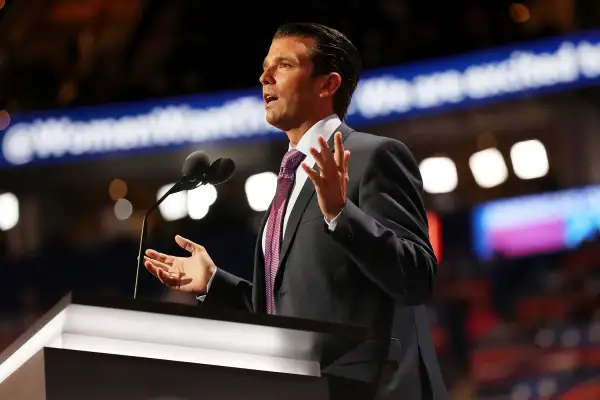What Does GOP Confusion Over Controlling Banks Mean to You?

When it comes to banking and finance, there’s a pretty straightforward definition of “high risk activities”: It’s what you want to stop and the other party purportedly encourages. That, at any rate, pretty much sums up the Republican position in bank regulation. The party’s platform urges the swift repeal of Dodd-Frank, a “legislative Godzilla” that loaded on “excessive regulation and burdensome requirements .”
How will the GOP do that? Well, by bringing back Glass-Steagall, the legislative Godzilla that regulated banking back in 1933.
The calls to bring back Glass-Steagall are strange coming from the GOP. As the Wall Street Journal’s Donna Borak and the Washington Post's Max Ehrenfreund have pointed out, the call to restore Glass-Steagall makes for awkward bedfellows. It’s the same law backed by Bernie Sanders and Elizabeth Warren. Bringing back Glass-Steagall has become kind of a shorthand for sticking it to the biggest banks, from both left and right.
But would it make the economy, and your money, any safer?
Probably not. Both Dodd-Frank and Glass-Steagall (technically, they’re the “Wall Street Reform and Consumer Protection Act,” and the “Banking Act of 1933,” but no one ever uses those names) regulate the biggest banks. But they do it in very different ways.
At the GOP convention Tuesday night, Donald Trump Jr. made a point of ripping Dodd-Frank.” It destroys small businesses,” the candidate's son said, “in favor of big businesses who can afford the vast number of lawyers and accountants needed to comply.” The part about destroying small businesses isn’t really true—yes, community banks are in decline, but they were long, long before Dodd-Frank for a host of reasons.
The part about the vast number of lawyers and accountants is at least partly true. “Partly” because it doesn’t exactly favor big businesses. Dodd-Frank imposes extra regulatory burdens on all banks with more than $50 billion in capital (about three dozen), known as “systemically important financial institutions.” This is a more official sounding term for “too big to fail.”
Under rules created by Dodd-Frank, the Treasury Department has great power to demand that those banks be prepared for any worst-case economic scenarios. It has often used that power to call for increasing capital reserves, meaning the banks need to set aside tens of billions of dollars as a security cushion if there’s a market crash. The law also prohibits some activities for all banks, like trading on their own accounts.
Glass-Steagall took a simpler approach. It just kept banks out of the investment banking business—funding companies—and limited the kinds of investments they could make. In 1999, the part of Glass-Steagall that split off commercial and investment banking was repealed (other parts, like deposit insurance, still stand). Supporters of Glass-Steagall like to blame this repeal for the financial crisis of 2008. That’s a big, big stretch, for two reasons.
One, separating investment and commercial banking didn’t really work very well. The companies that blew up in 2008, Lehman Brothers and Bear Stearns, were not in the commercial banking business of loans and deposits. They were pure investment banks (or in the case of Bear Stearns, closer to a giant hedge fund). So keeping Glass-Steagall would have done nothing there.
Two, believe it or not, all the crazy instruments that blew up in 2008—in particular, the infamous subprime mortgage bonds and derivatives—would have been just fine under Glass-Steagall. In fact, it’s likely that many years of climbing through Glass-Steagall loopholes taught banks to create bonds that were technically investment grade, but actually dangerous.
The big thing that bringing back Glass-Steagall would do is force a major reorganization of the very biggest banks. Namely, JPMorgan Chase, Citigroup, Bank of America, and (to a much lesser degree) Well Fargo .
Those are the ones with investment banking operations that would have to be split off.
The thinking of the Bernie Sanders/Elizabeth Warren camp on this is clear: They’d really like to keep the regulations of Dodd-Frank and bring back Glass-Steagall on top of it. Overall, if you think that giant banks are a menace no matter how you regulate them, then it might make the banking system somewhat safer. It would, incidentally, be a fine—and very unintentional—boon to Goldman Sachs, almost certainly restoring its premier spot at the top of the investment bank league tables.
If we were to follow the GOP platform, the effects are much more mixed. Repealing Dodd-Frank would have little effect on smaller banks. It would certainly reduce the costs of regulation for big regional banks, and make their shareholders happy. For depositors, the difference would be minimal. Stripping away the regulations for the biggest banks, on the other hand, would almost certainly increase the risks of another world financial market meltdown.
Restoring Glass-Steagall would be a very partial substitute. It’s not a great solution if you want to make the markets safer. Though if what you want is to stick it to JPMorgan and its chief, Jamie Dimon, once mentioned as a potential Democratic Treasury secretary, it has its charms. That said, the impulse to trash the other party’s financial reforms is not exactly a new one. There was once a major bank regulation bill backed by a Republican president, and derided by the majority of Democrats. Its opponents thought they’d buried it when a Democrat was elected.
The Republican president involved was Herbert Hoover. The Democrat who had to get his own party in line to pass it was Franklin D. Roosevelt. And the bill was Glass-Steagall.